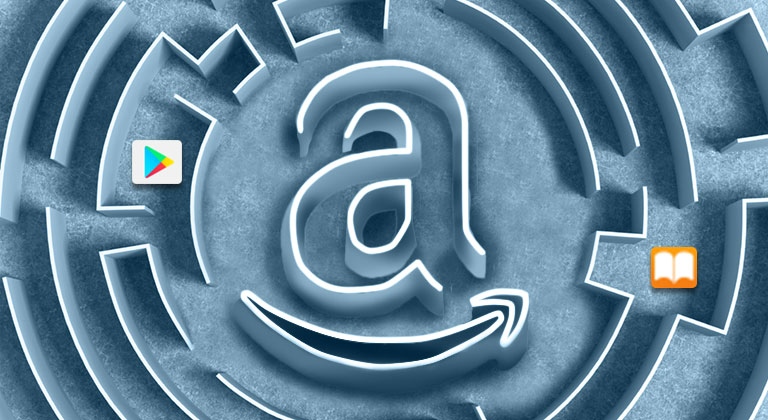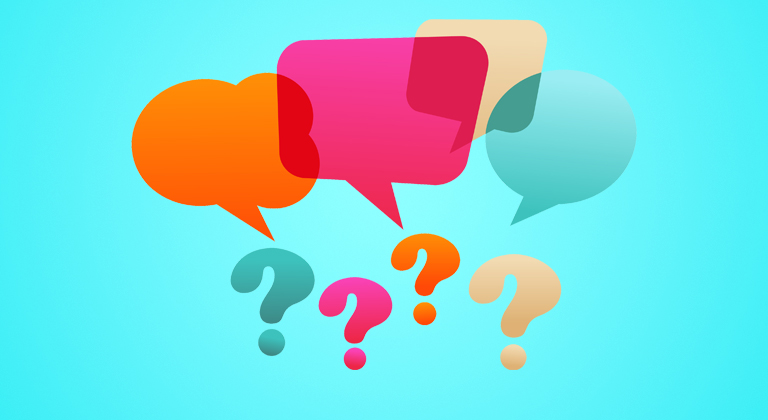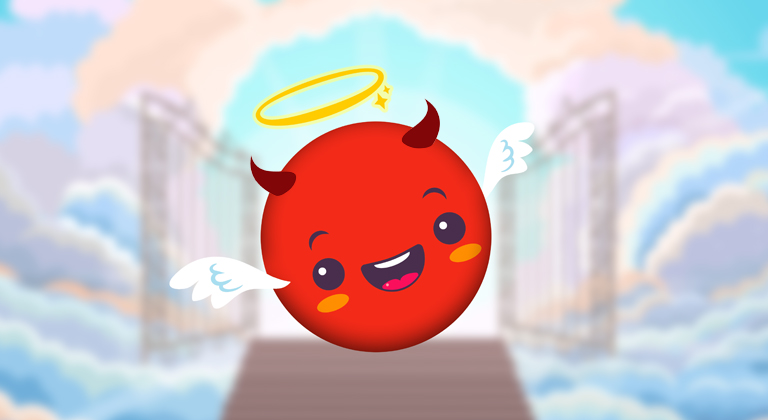Should I Stay or Should I Go? Sticking with Amazon’s KDP Select, or Going Wide?
One of the most frequently asked questions about self-publishing is whether or not to sell your books on Amazon exclusively, or to ‘go wide’, sending them out to a multitude of different online bookstores. There’s no one right answer, just like there is no one right way to write a book – so today Ginger is diving into the issue to give you some of the pros and cons – and also on what his choice is, how he made it, and some ideas on how you can decide for yourself. Of course, this is just one author’s opinion – and if you have one of your own, please let us know via the comments below. This is definitely a conversation that benefits the community most when we hear from many different sources…
What are the benefits of ‘going wide’ when it comes to your books?
So, let’s not beat around the bush – Amazon pretty much has the market for eBooks sewn up. As of 2017, Amazon accounted for more than 80% of all digital book sales, and just a year later accounted for no less than 50% of all online sales – of anything! If you’re serious about selling books online, Amazon is most definitely the biggest marketplace you should be playing in.
But is it the only one? That’s a question that has plagued self-published authors for years now – ever since Amazon introduced their KDP Select program; which offered a number of advantages for authors who promised to keep their books exclusive to Amazon for at least 90 days.
Opinions differ – but I’m going to share mine. There are both advantages and disadvantages to ‘going wide’ and you have to decide just what your strategy as an author is before you decide if remaining exclusive to Amazon, or branching out, is right for you.
So, what does the marketplace look like?
Ebooks have been around almost as long as the Internet – both in the form of digital-only copies of traditional books, or titles available exclusively online. From fanfic sites online, to ancient saucy servers like ASSTR.org, there has never been any shortage of reading material to be found on the Internet – but it really wasn’t until Amazon introduced the Kindle reading device, back in November 2007, that people started getting serious about paying for digital books.
But that’s changed. Today, people claim that the sale of ebooks are going down – accounting for about 21% of book sales as of 2018. That would still be over a billion dollars in revenue, even if the claim was true. The fact is, though, that traditional publishers lie like politicians – and only claim that ebook sales are diminishing. This is because they fail to track books not published through traditional publishing. Those account for more than 50% of all book sales, plus nearly two-thirds of all digital book sales, and that percentage is climbing.
Amazon owns the vast percentage of ebook sales, and don’t report their numbers openly – hence why it’s difficult to get an exact figure to compare against the claims of traditional publishing. However, they’re most definitely not the only players in the game. Apple have their Apple Books marketplace, Barnes & Noble are still dragging their Zombie-like Nook behind them, and websites like Smashwords, Google Books and a plethora of others offer alternative venues to buy ebooks.
The question is – which of these is worth publishing your book on? And what are the advantages and disadvantages of doing so?
The Big Fish – KDP Select
Amazon are accused of monopolizing a number of industries, but nowhere is this more apparent than in digital publishing. With over 80% of all book sales – print or otherwise – going through Amazon, it’s clearly difficult to establish yourself as an author if you’re not on the world’s most accessible publishing platform.
But in order to cement their hold on the marketplace, Amazon heavily incentivize independent authors to make their books exclusive to Amazon. The biggest advantage they offer – aside from access to the biggest digital bookstore in the world – is something they call KDP Select.
KDP Select is a program in which you agree to make your book exclusive to Amazon for a period of 90 days – which can be renewed afterward. Once signed up, your book cannot be made available for sale anywhere else, on any other digital bookselling platform (but you can still sell print versions.)
In return, though, you receive a number of advantages.
First and foremost, you can choose to make your book part of Kindle Unlimited. This is a subscription service kind of like ‘Netflix for books.’ Subscribers pay a monthly fee, and in return for that they can ‘borrow’ any ebook that’s part of the Kindle Unlimited program for free.
Of course, it’s not really for free – since they pay that monthly subscription. This also means that authors get paid for their work; with every page read of a book that a reader ‘borrows’ through Kindle Unlimited earning the author a percentage of that month’s collective revenue (roughly $0.005 per page.)
For authors who write popular genre fiction – like romance, for example – this can be huge. I myself write romance, and for every dollar I earn in book sales, I’ll earn about $5 in page reads; making KDP Select a no-brainer opportunity for me.
That’s not the same across the board, though – and even other romance authors say their split between page reads and book sales is more like 50/50. Writers who publish thrillers or non-fiction can see an even smaller split; leading to some of them considering whether the revenue they receive from page reads outweighs the revenue they’d make offering their book through different marketplaces.
But that’s not the only advantage to being a member of KDP Select. Amazon also offer the opportunity to use their Free Book Promotion and Kindle Countdown Deal marketing promotions; which can help get your book out in front of thousands of potential new readers. Many authors incorporate Amazon’s Free Book Promotion as a cornerstone of their book launch strategy (I certainly do) and it can be massively powerful for the profitability of your book.
There are additional advantages, too – like access to a 70% royalty rate for Amazon’s marketplaces in Japan, India, Brazil and Mexico, and being able to make your book part of the Kindle Owners’ Lending Library; in which readers can ‘lend’ a digital copy of a book to a friend or family member.
There’s one additional advantage that many authors choose – the fact that making your book exclusive to Amazon means you only have to deal with Amazon; streamlining a lot of the complexity of publishing your book onto different digital platforms.
So, on the face of it, there are a lot of reasons why making your book exclusive to Amazon can make sense – but does it make sense for you?
Going Wide
While there are plenty of reasons to be exclusive to Amazon, there are almost as many to consider in regards to ‘going wide’ by offering your book for sale on alternative platforms.
One of the most obvious of these is the fact that by remaining exclusive to Amazon, you’re also making your title unavailable to readers on any other marketplace. While Apple Books, Google Books, Smashwords and other platforms make up a small percentage of the digital marketplace, it’s worth remembering that a small percentage of a billion dollar industry is still a vast amount of money; and one immediate advantage to ‘going wide’ is the fact that you tap into marketplaces that have a lot less competition than the overcrowded Amazon bookshelves.
Apple Books is a great example. Apple users tend to be very platform specific – relying on Apple Books, iTunes and Apple TV on their Apple-connected Macbooks, iPads and iPhones. The Apple digital ecosystem is almost entirely self-contained, and Apple users tend to buy their ebooks, music, podcasts and magazines through Apple marketplaces. If you’re keeping your book exclusive to Amazon, you’re ignoring this pool of potential customers entirely.
The same goes for Google, and the diminishing number of users of the Barnes & Noble Nook. Websites like Smashwords, too, have their loyal users who will almost exclusively look for new reading material through that platform. By ‘going wide’ you get to access to all of these readers.
And if you’ve ever wanted the label of NYT or USA Today bestselling author, you have to go wide because those lists will only consider books that are published in more than one store.
So depending on your goals, and the type of book you’re publishing, you might be scoring a bullseye by gaining access to these marketplaces; but it comes at a cost. Each marketplace you publish your book on will require different formatting, different covers, different marketing strategies and have different rules about what can and can’t be published; and where and how you can share you book to different readers. Many self-published authors simply ignore other marketplaces like Apple Books because there’s so much work involved in making your books available on them; and that is time and effort that many authors think could be better spent actually writing.
And in Amazon’s defense, the world of digital publishing wasn’t conquered entirely in a vacuum. In 2016, Apple was fined $450 million for conspiring with mainstream publishers to ‘fix’ the price of their ebooks, Google Books is still replete with digital piracy, despite years of protest, and the Barnes & Noble Nook has been declining nearly 25% year over year, making many people wonder how it’s still in existence; and how long it will remain so.
Well-intentioned politicians like Alexandria Ocasio-Cortez might complain about the morality of huge monopolies like Amazon, but when it comes to digital publishing they are head and shoulders above the competition in terms of consistency, integrity and both reader and author experience; which explains why they continue to grow the ebook marketplace, while other digital bookstores are in deep decline.
Which one is right for you?
Having read that, you might think I’d argue against ‘going wide’ – but I simply argue that it depends.
You have to think about the type of book you’re publishing, what your intended audience is, and how you plan to market and promote it. Because I write romance books – a huge percentage of the readers of which are part of Kindle Unlimited – it’s a literal no-brainer for me to be part of KDP Select (then again, I know plenty of romance authors that have gone wide and claim to make as much, if not more, since leaving Amazon.)
If I was publishing more non-fiction books, I might be more tempted to consider going wide. Despite doing most of my ebook purchases on Amazon, I’ve bought a number of non-fiction, self-help titles on Google Play Books and iBooks (when iBooks still existed.) Likewise, I’ve bought niche publications on digital advertising and marketing from websites, with the books available in .pdf format. It largely depends on the books and the audience; and niche books for sale at a significant price ($9.99 rather than $0.99) start to make more sense when you look at the big picture.
It all revolves around strategy, more than anything else. If you have a strategy for your book launch and marketing that makes sense across multiple markets than it might be a smart idea. For example, if you’re advertising a book available on Apple Books through Facebook, you can specify that your audience has an Apple device like an iPad or iPhone; making it easy to tap into a very specific audience who buy books from a marketplace where there’s a fraction of the competition of Amazon.
If you’re smart, strategic and deliberate, you can definitely use this to your advantage…
However, if you’re like me – I barely have the wherewithal to wear matching socks – it starts to make less sense. I have to get my head around my Amazon launch strategy – which is complicated enough – without throwing other platforms into the mix. Likewise, running adverts on Facebook for Amazon books is easy – I direct them straight to the book’s product page. When you bring multiple marketplaces into the mix, you then have to work out how to direct different readers to different platforms; which can start to get really complicated.
So, what’s the answer?
At the end of the day, if you’re seriously considering ‘going wide’ you have to ask yourself one serious question:
Will I make more money going wide than I would be being exclusive to Amazon?
If you can confidently argue that you’ll make more money with a wide release than having your book exclusive to Amazon, then go for it. There’s a lot of money left on the table, with all those millions of potential readers who look elsewhere for their digital content.
However, you have to be honest with yourself – will you really make more money by going wide?
Will you really have the bandwidth to launch your book on multiple sales channels? Will all that extra time spent really make financial sense? And once all is said and done – are you prepared to look at your sales figures after three months and see if the reality lived up to the potential?
If the answer to those questions is YES, then go for it. In fact, do more than that – reach out to us, because we’d love to hear your experiences and wisdom.
However, I know for a fact that I’d be making less money by having my books ‘wide’ rather than exclusive to Amazon; and that’s not just because I’m a romance writer. I know that the time spent on marketing, launching and advertising would get diluted by having a multi-platform strategy – and the privileges of being part of KDP Select, like the free promotion days, are worth more to me than the money I could confidently expect from different marketplaces.
That’s just me, obviously – but I’m sure I’m not alone. Even authors who publish books that might be successful on platforms like Apple Books and Google Books have to make the commitment to market and launch their books appropriately; and many don’t. Some authors lose real dollars by chasing the hypothetical ones; and you don’t want to be one of them.
So, I’d conclude that the safest choice is to simply flip the default. A lot of authors I speak to think they’re ‘playing it safe’ by going wide and avoiding exclusivity to Amazon, but I’d argue the opposite. Choose KDP Select by default, and only if you’re sure about and committed to ‘going wide’ should you think about unchecking the box to subscribe to KDP Select.
Remember, your subscription period to KDP Select is only 90 days – you can ‘go wide’ after three months if you figure you’ve made a mistake. For most authors – especially those who take advantage of Amazon’s free promotional tools – I’d imagine that 90 days is all it’ll take to convince them to stick around.
Then again, it’s worth pointing out that your exclusivity is BOOK specific, not AUTHOR specific. That means that you’re free to pick and choose which of your books is in KDP Select (exclusive to Amazon) and which aren’t (leaving you free to go wide with them). So one idea would be to experiment a bit, especially if the answer to whether or not going wide is right for you isn’t so clear.
Either way, keep in mind that this is all just my opinion – if you disagree, I’d love to hear why; and I’d love to learn about successes you might have had by ‘going wide.’ Be sure to leave a comment below, and let us know where you think the smart author should be publishing their work!












I can’t get enough of your insightful articles and engaging stories. Thank you for sharing your passion with the world!
Further to Elizabeth’s comment, Kobo offers other advantages, such as:
– 45% royalty on pricing less than $2.99
– No surcharge per MB for file size
– There is no $9.99 pricing cap which is advantageous for box sets
– many *curated* promotional opportunities that cost little to no money (most rely on a percentage)
Do the first 90 days on KDP SELECT, then go wide
Oops… Wide vs exclusive, of course. Not wide vs. Kobo!
Well done on the whole, but there are some significant gaps in this analysis. I’m surprised that such a lengthy article on wide vs Kobo doesn’t mention:
* Kobo, a significant wide marketplace
* The risks of depending on one platform
* Increasingly challenging and expensive visibility on Amazon without large ad spend
For those who are in indie publishing for the long haul, we need to look at more than just the immediate earnings. What makes sense in a long term career? Where are you more likely to cultivate a readership that actually buys books?
In addition, I would argue that marketing wide isn’t that much more complicated than trying to tickle Amazon’s algorithms. It takes a different mindset and approach, but it’s not accurate to claim that it’s easier to market on Amazon.
Good article. You say it’s important to consider the audience and that you’ve found certain things to be true about the romance genre.
What about the others? Do you know of any data anywhere that breaks down KDP vs wide for science fiction? Fantasy? Mysteries? Westerns?
Seems like this would be helpful for folks to know.
Also, I’d like to suggest a second consideration besides money: exposure. So far, all advice says the unknown author should go KDP plus advertising to try to raise awareness. It would be helpful to know whether that advantage is a constant or whether it’s shifting over time.
Yes, going wide requires a commitment of at least one or two years. Not sure where you learned that each marketplace requires different formatting and covers. I publish on Kobo (a retailer with HUGE worldwide reach I might add), Apple, and Amazon, all with the same .epub and cover.
Your article skews heavily toward Amazon. A little more research into the pros of going wide would help. Here’s a good Facebook group to get you started: https://www.facebook.com/groups/441469159372773/
And because I know a little about Kobo, which you didn’t mention, here are some pros:
– 45% royalty for ebook prices less than $2.99 (Amazon offers 35%).
– 70% royalty with no $9.99 price cap. This is especially good for box sets.
– No additional fee for downloading ebooks. Again, good for box sets. (Amazon charges $0.15/MB.)
– Many promotional opportunities available for little or no upfront cost.
– Huge global reach (190 countries).
It all ads up. Capturing 1/1000th of 1% of the smaller marketplaces is still a tremendous number.
With thanks,
Lee